This
post was originally published on
this siteOriginally posted at: http://www.nerdfitness.com/
Everybody travels.
Whether it’s for business, pleasure, vacation, or world domination, at some point in our lives we all depart from the comfort of our personal “Shire” to visit another location.
It might be a quick trip to the next town over for a business conference or a massive adventure halfway around the world for months at a time.

No matter what kind of trip it is, one thing is certain:
Our normal routines get completely thrown out the window when traveling:
- If you work out in a gym, suddenly you might not have access to any equipment.
- If you run around your neighborhood, suddenly you no longer have a familiar path to follow.
- If you usually prepare your own meals, suddenly you don’t have a kitchen or fridge.
- If you’re used to a good night’s sleep, suddenly you’re sleeping at odd hours in different time zones.
We are creatures of habit – while working a normal day job, we can stick to a routine pretty easily (wake up at the same time, eat all meals at the same time, work out at the same time, go to sleep at the same time).
However, when we start traveling, absolutely nothing is familiar and the slightest speed bump can be enough to screw things up.
Luckily, there is hope!
It’s time to get you a specific action plan that you can take with you on your next trip.
This is the philosophy we teach to all of our 1-on-1 Online Coaching Clients. Many travel quite a bit, so having “worldwide accountability” and a specific plan for travel has been a game changer for these Rebels.
Are you trying to learn a new exercise, lose weight, or build muscle, but find doing it on the road a challenge? Let us help you – click below to learn more.

Step 1: Make It Your Constant
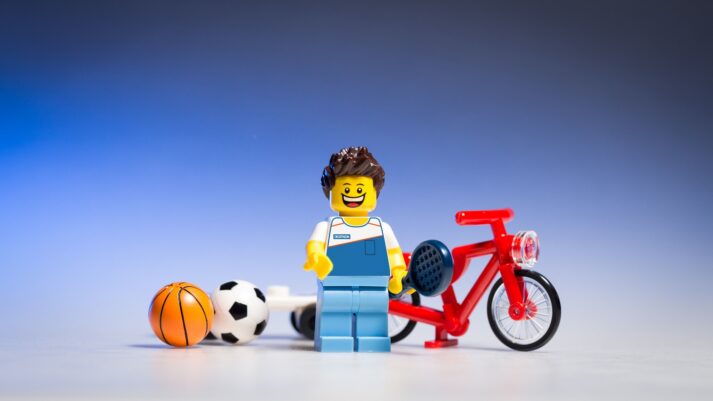
If you are trying to get healthy but need to travel frequently, I want you to make exercise your constant.
I don’t know if you were a Lost fan, but my favorite episode, “The Constant,” involved a character named Desmond who had to find the one “constant” in his life in order to stay sane.
Something Desmond could focus on as his mind traveled through time.

You had to be there.
I’ve traveled quite a bit over the years: sightseeing countries, sleeping on buses, exploring temples, and visiting a new town seemingly every other day.
During all this chaos: exercise became my constant.
I knew that without a doubt, no matter where I was or what I was doing, every other day I would find a way to work out – no excuses. I might have had to add in an extra day between workouts maybe a handful of times.
What I’m trying to say is this: if you are serious about prioritizing your health, even while traveling, then start treating exercise like YOUR constant.
Make it a reliable, consistent thing in your schedule, no matter where you are in the world.
No matter what.
Sound difficult? Start by asking yourself the following:
“If I HAD to still get my workouts in, even if I am traveling or on vacation, how would I do it?”
Most answers will be something like this:
- “If I had to work out, it would mean that I need to wake up SUPER early tomorrow morning to hit the gym before the conference starts.”
- “If I had to get my run in, it would mean I could only go for a 20 minute run instead of my normal 60 minute run.”
- “If I had to get my workout in, that would mean I need to actually PAY for a day pass at a real gym, because I know hotel gyms are crappy.”
This is the most important question you can ask yourself before your trip: “How do I make this work for me?”
Then, structure your environment and schedule to make it happen:
- Add it to your calendar.
- Set up a text reminder.
- Plan your schedule around it.
- Have your coach or friend remind you.
- Research the nearest gym or park.
Again, ask yourself – what if you HAD to work out, no matter what. How would you get it done? What would you need to change?
And then do whatever you can to make it your constant.
“Steve, I can find the time. But What KIND of exercise should I do while traveling?”
It all counts, but if I had to pick one, I’d say strength training.

Studies consistently show that strength training is the best method for weight management – especially when traveling – when coupled with a proper diet (we’ll talk about eating healthy while traveling shortly).[1]
If time is limited on the road, and you’re gonna plan on just one form of exercise, plan for strength training.
You’ll get the most bang for your buck with strength training, especially when compared to a similar amount of time spent doing cardio.
So, if you ONLY have 30 minutes, prioritize strength.
Need some help on starting a strength training routine?
We have a free guide, Strength Training 101: Everything You Need to Know, that will show you exactly how to start a practice to grow strong and build muscle. Plus, there’s a section in there on training without a gym, in case you there’s none in sight.
You can grab the guide for free when you join the Rebellion below:
Download our comprehensive guide
- Everything you need to know about getting strong.
- Workout routines for bodyweight AND weight training.
- How to find the right gym and train properly in one.
Let’s talk some actionable steps exercising while traveling.
STep 2: Plan Your Workout Ahead of Schedule

Whenever I travel, my first mission – before I even leave – is to find a place for me to work out.
In some instances, this means I pay $20 for a day pass at a real gym.
Yes, that is an absurd amount of money to spend for one day in a gym, especially considering I only pay $30 a month for my current gym membership!
However, I gladly pay this amount every time I travel, and prioritize it in my travel budget.
Because exercise is critical in my life right now.
Because NOT exercising isn’t an option (see step 1).
Because I’m not just paying $20 to use a gym.
Because I’m really paying the $20 to KEEP my momentum going.
Everybody struggles with getting back on track AFTER they come home from a trip.
I am no different.
So, by hitting the gym – even when traveling – I am maintaining momentum, which makes getting back into rhythm when I get home super easy.
No gym anywhere in sight?
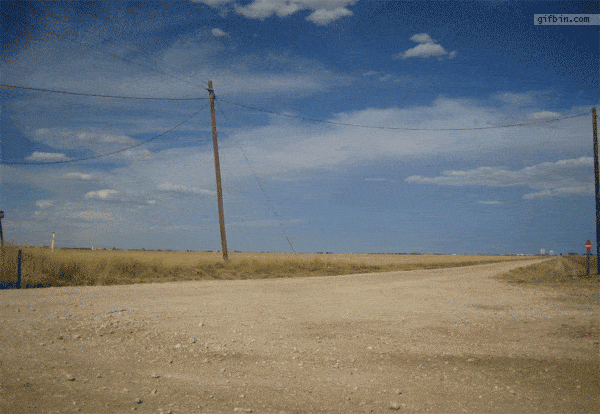
No problem, I once spent 8 months living out of a backpack and never once set foot in a gym.
So my “gym” became anywhere with the following:
- A pull-up bar or swing set
- A sturdy tree branch
- A building or bus stop overhang
I know that as long as I can find one of those three things, I could complete a full workout!
My workouts consist of:
You can check out our post “How to Build Your Own Workout Routine” for inspiration on creating a training practice in your nearby environment.
Even just one full-body strength training session per week (if you’re on a shorter trip) can often be enough to allow you to maintain your current levels and hit the ground running when you get back.
What’s that you say? Your hotel gym is TERRIBLE?
I know. They all are.
Which is why I work out in my hotel room instead (here’s a 20-minute routine for you to try).
Just remember, plan ahead and make exercise your “constant.”
STEP 3: Nutrition is Still the Most Important part of the Equation.

Despite what you read in Instagram captions, calories on vacation still count.
Every beer.
Every cookie.
Every french fry.

Armed with this information, you can do one of two things:
- Path #1: Lament the fact that your body still follows the laws of thermodynamics. Then, eat bad food and feel terrible about yourself when you get home.
- Path #2: Plan ahead, STILL eat unhealthy food while traveling, and don’t feel bad while doing so. Come home and not weigh any more than you did when you began your trip.
Everybody picks Path #1.
We’re going to pick Path #2.
I promise you it’s possible.
Personally, I know I am going to eat poorly while traveling. It generally means eating at a Chili’s at the airport, or Wendy’s on a road trip. Knowing that this happens literally every time I travel, I plan ahead!
Here’s what I do specifically while traveling:
#1) I skip meals strategically. I know that if I skip breakfast, it means I can eat a slightly larger lunch and have an extra drink with dinner and STILL come in under my daily calorie expenditure.
#2) I prepare for bad meals. I love me a good steak dinner with a side of mac and cheese and sweet potato fries and dessert and a few whiskeys. When I’m on vacation or celebrating, that sounds like heaven to me.
However, I know if I always eat like that, I’m going to pack on a ton of weight.
So I plan ahead for a big meal so that I can enjoy it guilt-free, and not see the scale budge. I eat protein and veggies for lunch, strategically undereating so that I can overeat for dinner – and not gain weight in the long run.
#3) I never eat 2 bad meals in a row. We have a big “never two in a row” rule at Nerd Fitness. Believe it or not, even being healthy just 50% of the time carries with it the tremendous potential for weight loss and a healthier life. So, if you eat a bad lunch, follow it up with a healthy dinner. Eat fast food for dinner? Cool! Make your breakfast healthy.
This is NOT “100% or nothing.” Every decision counts, every meal counts, so any decision where you are SLIIIIIGHTLY healthier than you would have been otherwise is a win in my book.
Curious on my default diet these days? You can read all about it right here. And here is the specific diet I followed – while traveling frequently – to lose 22 pounds sustainably.
Tips for Eating HEALTHY on THE ROAD

Since diet is everything, here are some tips for eating nutritiously, airport to airport.
Ask for a mini-fridge. You’d be surprised at how many hotels will have a room with a mini-fridge waiting. You just have to ask for it. Granted, it might be full of junk food they’re trying to peddle on you. Fill it with your own healthy snacks – just make sure they don’t charge you for taking out the other foods! Fruit, sliced veggies, and some deli meat will provide you with some sustenance until you can order a proper meal.
Here is a post with some ideas for healthy snacks you can buy and store in your room.
Travel with a cooler. If you know the hotel can’t accommodate a mini-fridge, or you’re on a road trip, no problem! Bring a mini-cooler or cooler bag. If you use a bag, it’ll fold up for easy packing.
Is it weird to travel with a cooler? Sure. But we embrace weird around these parts.

Bring non-perishable snacks with you. I’ve eaten almonds forgotten in a backpack, months later, and lived to tell the tale.
Lots of dry food like nuts and jerky won’t spoil anytime soon, so store some in your travel bag. It’s a good move to have snacks on you at all times, because who knows when you’ll eat next. Munching some beef jerky is a much better idea than the pizza in the airport terminal. Here are some good almonds to purchase, and here’s some recommended beef jerky for you to try out.
Focus on protein and fiber. When choosing meals or snacks, make sure the foods you pick are full of protein and fiber.[2] This will help keep you full, so you’re not tempted to eat the donuts waiting for you at your work conference.
What are protein and fiber-rich foods? Hard-boiled eggs will store good, and can be bought at many convenience stores. That’s a good protein source. Deli meat, jerky, and nuts will also do the trick for your protein requirements.
Fiber-rich foods? Fruits and vegetables for the win. Always bring an apple with you.
All is not lost if you order fast food. There’s a common belief amongst our coaching clients, that the moment you step foot in a fast food store, you lost. You made a terrible decision by even walking in. Might as well order whatever, because you already failed.
This is 100% not true. What you order will make all the difference. For example, I eat a chicken bowl from Chipotle almost every day. To the point that it’s weird.[3]
Why? Because it’s healthier than anything I’m realistically going to make at lunchtime, given my schedule.
Remember, what you order, is often more important than where you order.
Let’s dive into that last point a little more.
HEALTHY EATING THROUGH FAST FOOD
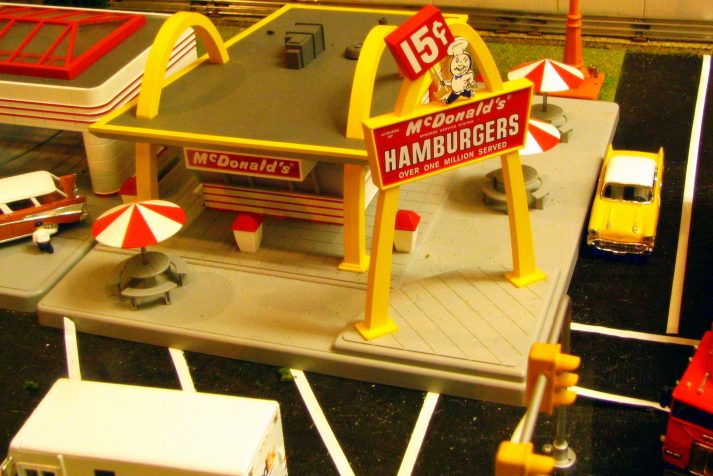
Let’s outline an entire day’s worth of eating, provided by a drive-thru window.
Most of these can also be found at your average airport terminal.
BREAKFAST:
Location: Starbucks
- Sous Vide Egg Bites, Bacon & Gruyere: A great protein source. Go ahead and order some black coffee with it too.
- Calories: 310
- Protein: 19g
- Net Carbs: 9g
- Fat: 22g
Location: Dunkin’ Donuts
- Sausage Egg and Cheese Bagel (no bagel): Sausage and egg are a breakfast staple. Plus, cheese!
- Calories: 370
- Protein: 16g
- Net Carbs: 3g
- Fat: 33g
LUNCH:
Location: McDonald’s
- Bacon Ranch Grilled Chicken Salad (Use the Balsamic Vinaigrette): It’s mostly greens, grilled chicken and a little bacon. No customization required. Your salad comes in under 400 calories.
- Calories: 320
- Protein: 42g
- Net Carbs: 6g
- Fat: 14g
Location: Subway
- Oven Roasted Chicken: Grab it with lettuce, spinach, tomatoes, onion, green peppers, cucumbers, and olives, with oil and vinegar as dressing. Also, feel free to add bacon and guacamole to increase your calories. Your nutrition info will look like this if ordered as above:
- Calories: 490
- Protein: 24g
- Net Carbs: 11g
- Fat: 35.5g
DINNER:
Location: Boston Market
- Three-Piece Dark: Lot’s of protein, decent fat, and no carbs.
- Calories: 300
- Protein: 37g
- Net Carbs: 1g
- Fat: 16g
- Green Beans: Keep it simple.
- Calories: 90cals
- Protein: 1g
- Net Carbs: 4g
- Fat: 5g
- Fresh Steamed Vegetables: Following our “simple” strategy.
- Calories: 60
- Protein: 2g
- Net Carbs: 4g
- Fat: 3.5g
Location: Chipotle
- Salad Bowl (with Carnitas): order it with Fajita Vegetables, Fresh Tomato Salsa, Sour Cream, Cheese, and YES for Guacamole.
- Calories: 710
- Protein: 34g
- Net Carbs: 12
- Fat: 51g
The above should help give you some ideas on what to order when you’re depending on fast food.
Want some more ideas? You got it.
HOW TO EAT HEALTHY AT THE CONTINENTAL BREAKFAST
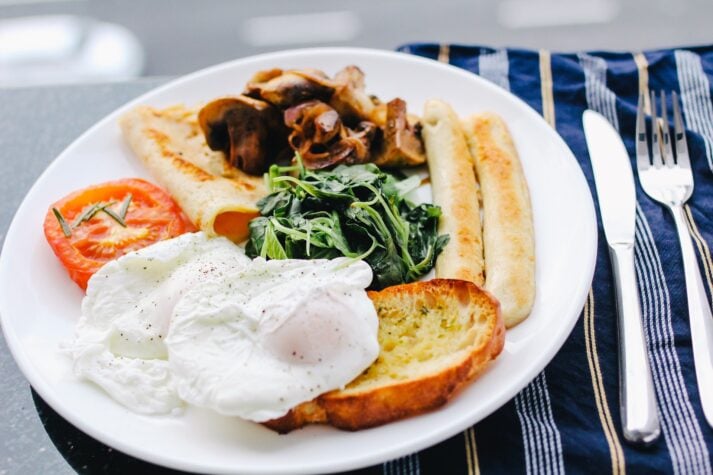
So your room comes with a free complimentary breakfast.
Might as well take advantage of it!

Go ahead and load up on these:
Eggs. We mentioned earlier to prioritize protein with your meals. Just about every hotel continental breakfast will have some eggs. The quality might be so-so, however. If they have some hot sauce around, this can make just about any scramble tolerable.
Sausage. Continuing with our protein theme, if there is sausage at the buffet, grab some. Granted, it’ll often have some sugar in the form of maple syrup included. But we’re going with the best we can here.
Bacon. We love bacon around these parts so much, we wrote an entire post on it. The fat in bacon will help keep you full until you’re next meal. Plus, if the eggs are crappy (the eggs will probably be crappy), you can mix in some bacon to bring up the tasty factor.
Fruit. It can’t all be about meat. Go ahead and grab some fruit for your plate. Apples are relatively high in fiber, which is why they’re my go to. Bananas also have decent fiber, as well as vitamin C, vitamin B6, and potassium.
Are there berries available? Grab some for their antioxidant potential (we talk all about berries and antioxidants in this article).
One final word about fruit. Fruit can be relatively high in sugar, so it’s important to eat some protein (eggs, sausage) with it to help prevent insulin spikes. You can check out this article for a deep dive into the subject.
Toast. I know, I know, we might be attracting the Carb Police on us for this one. But you can do a lot worse at a breakfast buffet than a little whole wheat toast. If you put some eggs and bacon on it, you have yourself a pretty decent breakfast sandwich with some fiber to help keep you full.
Alright, prioritize the above on your plate. Plus, stay clear of the following:
Juice. If I could give you one single piece of diet advice, it would be this: don’t drink your calories. There’s a lot of arguments on diets, but this advice is widely accepted.
An orange has plenty of vitamins in it, plus a lot of fiber to help balance out the sugar. OJ? Zero fiber, which means it’ll wreak havoc on your blood sugar levels.
Skip the juice and eat the whole fruit.
Pancakes/Waffles. Don’t eat these. The batter itself will have sugar in it, plus it’s designed to have more sugar (maple syrup) poured on top.
Stick to toast.
Cereal. A breakfast food often packed full of sugar is cereal. For example, the third ingredient for Cheerios is “sugar.” And that’s Cheerios. Don’t even get me started on Fruit Loops or Frosted Flakes.
Again, stick to toast.
The above advice should get you started on loading up properly at a breakfast buffet.
Step 4: Stay Active. it All Counts.

Last but not least – stay active.
I don’t care if you’re walking laps in the airport while listening to Ke$ha during a two-hour layover or jumping rope at a bus stop – if you can find a way to be active, you are winning.
It all counts!
I already told you that eating right will be 90% of your success or failure – that means you need to be “on” with how you eat every day, even on days that you’re not strength training.
Go for a run around the town, go for a hike, toss a frisbee in the park, go swimming in the ocean, etc.
Whatever it is, do something!
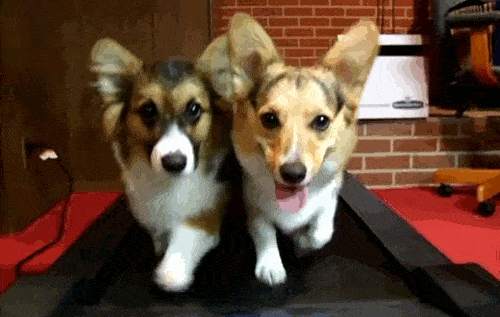
Here’s why this is so crucial: on days when I exercise, I eat better.
Something activates in my brain when exercising that says “I’m trying to be healthy, so I’m going to eat healthy.”
On days when I don’t exercise at all, I tend to say things like “meh, I’ll do it tomorrow” or ‘it’s only one meal” or “it’s only 37 beers” (kidding, Mom).
Want to keep things simple?
Go for a walk – try walking EVERYWHERE. In a big city? If it’s nice out walk instead of taking a cab! Go for a jog around your new surroundings…just stay active.
If you’re on a work trip, consider trying a “walking meeting,” made famous by Steve Jobs. You know, that guy who is responsible for the device you’re probably reading this article on.
Step 5: Practice Antifragility.

Things are going to go wrong while you travel.
Your flight WILL get delayed.
Your only options for food WILL be McDonald’s.
Your hotel gym WILL be crappy.
You’ll forget your kid at home.

It’s going to happen, and there’s nothing you can do about it.
So rather than getting flustered and lamenting the fact that things aren’t perfect, prepare for chaos!
What doesn’t kill you makes you stronger.
And what doesn’t break you makes you stronger too.
This is how we become antifragile.
If you know things will most likely get disrupted, then you won’t be bamboozled when it happens!
This is why I try to live out former president Teddy Roosevelt’s quote: “Do the best you can, with what you have, where you are.”
I know I’m going to eat fast food and get stuck doing a hotel room workout.
It’s better than nothing, right?
If I can’t get to a gym…I do a workout in a park.
If I can’t get to a park…I do a workout in my hotel room.
If I can’t do a full workout, I do half a workout.
If I can’t eat perfectly, I aim for “pretty good.”
50% compliance is still 50% better than nothing!
A NOTE ON SLEEP, JET LAG, AND HYDRATION
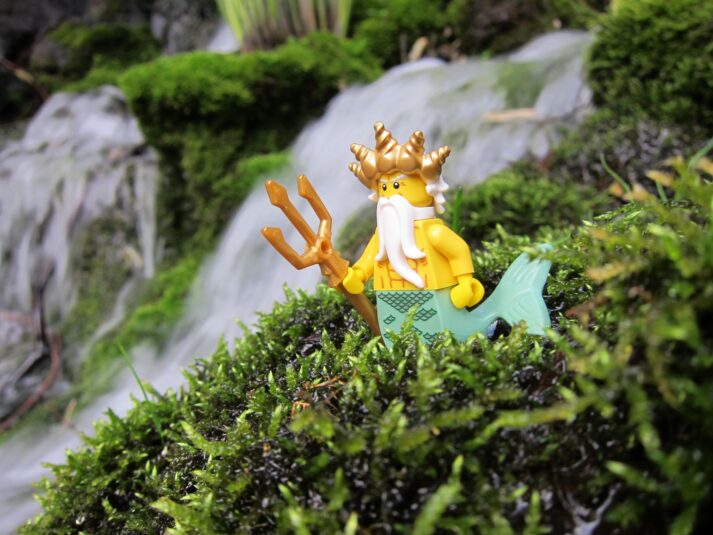
We need to address a few final points: sleep, jet lag, and hydration.
All of these are going to impact your ability to follow the steps above.
FIRST UP, SLEEP.
When I’m sleep deprived, I often don’t have the energy to exercise…when the reality is that exercise is often the thing that will give me energy (foreshadowing).
Also, if you’re lacking on shuteye, you’ll get hungrier.[4] When you’re sleep deprived, your brain sends signals for more energy, which means more calories. This is troublesome if you’re trying to hold out until you can order a nutritious chicken salad.
Prioritize sleep.
Two good tools to help with this are earplugs and an eye mask. Some hotels have a way of being bright and noisy.

DEALING WITH JET LAG.
Even being able to go to sleep, is going to assume you are not suffering terribly from “jet lag.”
Jet lag is the phenomenon of traveling from one time zone to another, but still being stuck in the former time.
For example, you fly from New York to London.
It was night when you left New York. It is now morning in London. You may or may not have slept on the plane.
What time is it?
Your body can have some serious trouble getting back on track, because our circadian rhythms (our biological clock) is thrown off from the geographic change.
My solution: work out (Step #4 again).
Studies have shown that a good sweat can help change your circadian rhythm, which might help you adjust to the local time.[5]
If you’re able to, workout as soon as you get settled to help combat jet lag. I’ve personally found this to be super helpful in adjusting to the local time.
FINALLY, HYDRATION.
Air travel dehydrates you.[5] The cabin’s air is environmentally controlled, with lower moisture than you found here on the ground.
- Humidity on the good old fashioned Earth: 30-60%
- Moisture in an average airplane: 10-20%
Yeah…that 10-20% is less than the Sahara desert.
On top of that, the pressurization of the cabin itself causes you to expel H2O.
Something something, physics. Something something, less water.
The low humidity and pressurized environment create a perfect scenario for you to lose lots of water.
And if you’re dehydrated, it can make you tired, which can go back to that whole hunger and calories thing.
Drink water.
Travel WorkoutS and Healthy Eating Resources
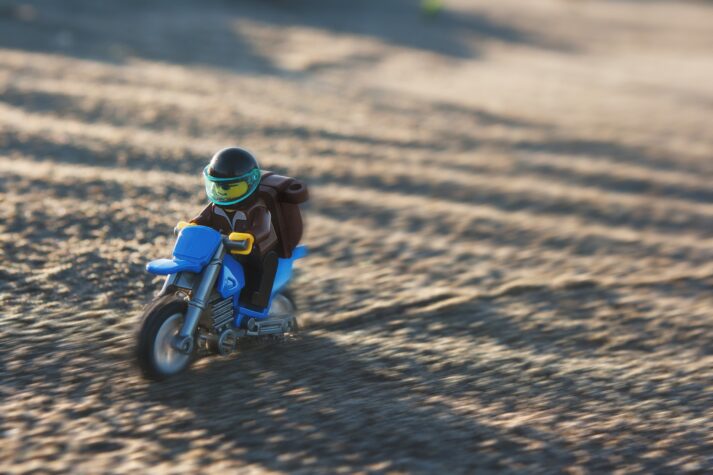
I respect the road warrior, and I respect you for wanting to learn how to be healthy while you travel.
Here are some other Nerd Fitness resources you can check out if you want to dive deeper.
MY FAVORITE TRAVEL WORKOUTS:
RESOURCES FOR HEALTHY EATING WHILE TRAVELING:
Above all else, Preserve momentum!
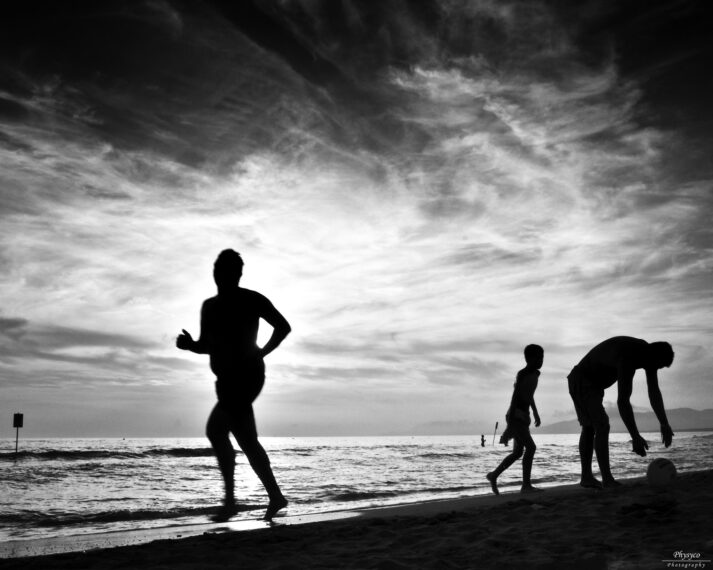
Whatever you’re currently working on improving in your life, you can continue working on that while traveling.
You only fall off the wagon if you resign yourself to the fact that it’s impossible to stay fit while traveling!
Why not have the opposite mindset, and ask “How do I make this work for me?”

Millions of people manage to stay healthy despite a hectic travel schedule, and I want the same for you.
Here are some final tips to help you while traveling:
Travel day? Pack some healthy snacks with you in your bag – apples and almonds are my go-to.
Going out to dinner with your company? Find the restaurant online, scour the menu, and “pre-order your dinner” in your mind so you know what to order when you get there. Order the “meat + veggie + potato” option on the menu, and ask for double veggies instead. Aim for something like steak tips, or grilled chicken, salmon, etc.
Traveling with your family? Let them know that you’re making a concerted effort to eat better and that you’d like their support.
Going out with friends? Let’s say you’re going out with buddies, and you have no choice but to eat fried food and drink tons of beer (I hate when that happens).
Compensate by being extra diligent on the days before and after – no drive-thru meals, no late-night vending machine stops, no bad snacks while at the convention.
Pick your battles. Plan ahead. Make eating a priority.
Alright, that should help get you started. Now, your turn:
Do you travel for work?
Do you have a big adventure coming up? An upcoming vacation this summer?
What struggles do you have while on the road? What kind of questions do you have about staying in shape and traveling?
Leave a question in the comments and I’ll help in any way that I can.
-Steve
PS – I want to again remind you of our Online Coaching Program. If you live from hotel room to hotel room, constantly on the go, there are still some things you can keep constant: your coach!
They can be right there with you, from any part of the world, helping you make sure you hit your fitness goals.
Click right here to learn more.
###
All photo citations can be read right here.[6]
Footnotes ( returns to text)
- You can check out this study, and this study, and this study on the benefits of strength training.
- You can check on this study on protein and satiation, and this one on fiber.
- Again, embrace it.
- Here’s a study on sleep and appetite for you to check out.
- You can check out this study on exercising and circadian rhythms.
- The LA Times has a great article on the subject.
- Backpacker, Decathlon, Good Party, Newtonmas, Apples, Model Train Display, Califonia Dreamin, Angry Hulk, Dirt Bike.










































 I know we missed Valentine’s Day, but I’ve always said love cannot be contained. Besides: People are always going on dates. People are always searching for new ways to break out of the regular mold, which is completely understandable. Dates are try-outs. You’re spending time with another person to determine how they fit into your life. Unconventional dates that branch out from “dinner, movie, drinks” into more adventurous, creative realms provide excellent feedback for making that determination.
I know we missed Valentine’s Day, but I’ve always said love cannot be contained. Besides: People are always going on dates. People are always searching for new ways to break out of the regular mold, which is completely understandable. Dates are try-outs. You’re spending time with another person to determine how they fit into your life. Unconventional dates that branch out from “dinner, movie, drinks” into more adventurous, creative realms provide excellent feedback for making that determination.






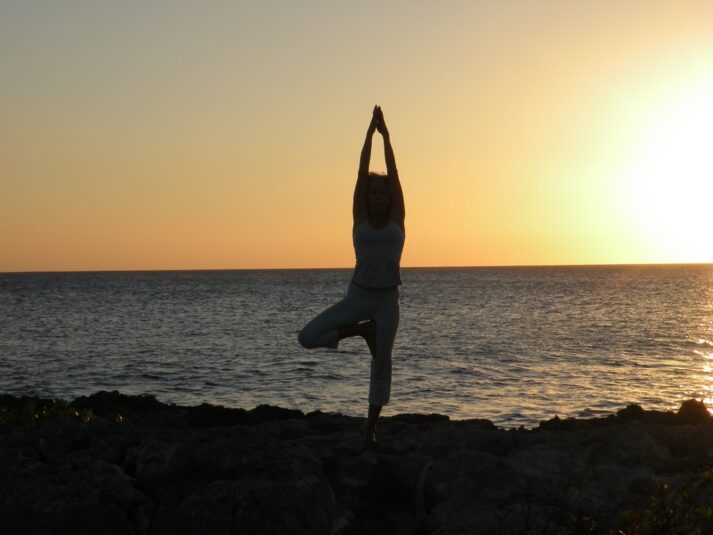
 For now classes are 6pm and 640pm at 2840 Wildwood st in the Boise Cloggers studio.
Book your class NOW!
click this ==>
For now classes are 6pm and 640pm at 2840 Wildwood st in the Boise Cloggers studio.
Book your class NOW!
click this ==>








